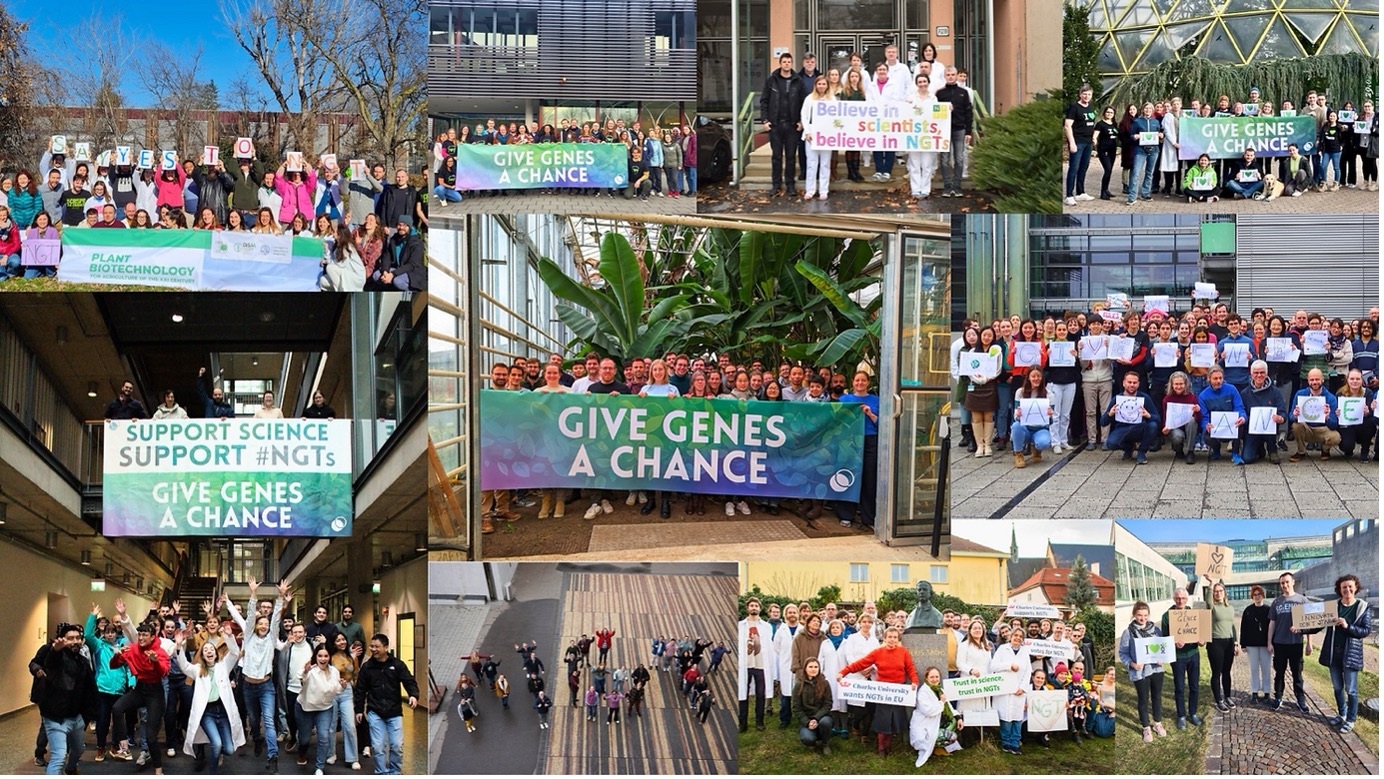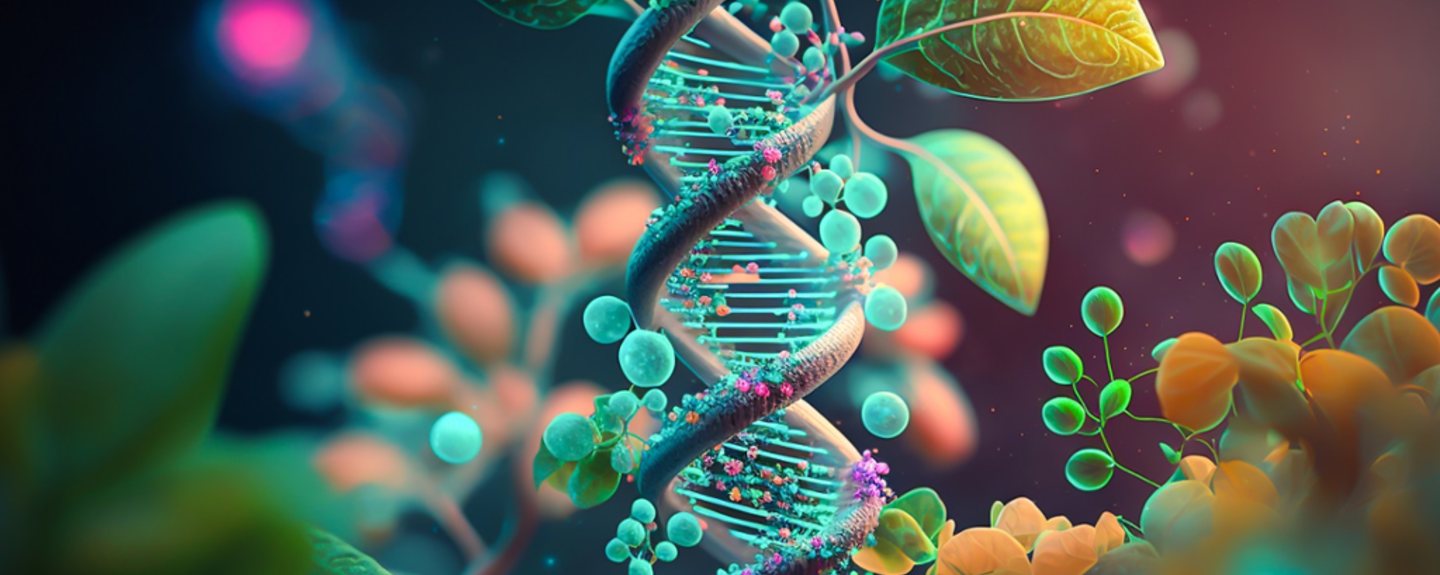Using gene scissors for a sustainable food system? The EU Parliament votes in favor
Breeding plants and seeds that are resilient to climate change challenges will become easier. Yesterday, the European Parliament adopted its position on the Commission’s proposal on new genomic techniques, with 307 votes to 263 and 41 abstentions. Members of European Parliament now support a simpler process for NGT plants that are equivalent to conventional plants. If the trialogues succeed, NGTs will be legally exempted from current GMO legislation.
With the adopted position of the European Parliament on the NGT proposal, we move one step closer to using technologies that create plants and seeds that are more resistant to diseases and resilient to climate change. This is a big win in the fight to create a sustainable food system. The rapporteur of the NGT- file, Jessica Polfjärd, stresses that the vote of the European Parliament represents a landmark. “NGTs are crucial to strengthen Europe's food security and to green our agricultural production. The new rules will allow the development of improved plant varieties that can ensure higher yields, be climate resistant or which require fewer fertilizers and pesticides.”
The debate around New Genomic Techniques (often referred to as NGTs) dates back far. Since 2016, debates on NGTs have troubled EU institutions and stakeholders. The European Court of Justice, responding to France's request, ruled in 2018 that NGTs will fall under the EU Directive on Genetically Modified Organisms (GMOs). With this decision, all plants obtained by NGTs were subject to the same rules as GMOs.
An important puzzle piece
Since the invention of agriculture, humans have been improving grains, fruits, and vegetables. Plants have been crossed and selected to get the right characteristics for over a thousand years. NGTs allow us to do the same, but faster and with more precision. NGTs are methods that create targeted mutations (mutagenesis and/or cisgenesis) in the genome of living organisms, such as plants and seeds. An example is CRISPR-Cas, also known as the ‘gene scissors.’
Unlike GMOs that ‘import’ foreign DNA from other organisms to a trait, NGTs can describe a variety of techniques that could occur naturally or by conventional breeding. The techniques enable us to modify the genes of living organisms to develop improved varieties. NGTs offer a faster and more precise way to breed crops with desired traits, especially those resilient to challenges like climate change. They outpace traditional methods, leading to the development of plants resistant to pests that require fewer pesticides.
The adopted directive
Members of European Parliament agree with the Commission’s proposal to have two different categories and two sets of rules for NGT plants. NGT plants considered equivalent to conventional ones (NGT 1 plants) would be exempt from the requirements of the GMO legislation, whereas other NGT plants (NGT 2 plants) would still have to follow stricter requirements. With this exemption, we can enhance crop traits faster than the benefits achieved through traditional breeding. This provides advantages to farmers, consumers, and the environment.
In contrast to the original proposal, the Parliament wants to label any form of product that contains NGT1. In addition to this, Members of the European Parliament propose establishing a public online list for all NGT1 plants. They also request the Commission to report on the evolving perceptions of consumers and producers concerning these new techniques, seven years after their entry into force. NGT 2 plants still fall under the GMO legislation, which is among the strictest in the world.
To avoid legal uncertainties, members of European Parliament want a full ban on patents for all NGT plants, including plant material, parts thereof, genetic information and process features they contain. They also request a report from the European Commission by June 2025 on the impact of patents on breeders' and farmers' access to varied plant reproductive material as well as a legislative proposal to update EU rules on intellectual property rights accordingly.
Give genes a chance
In the lead-up to the vote in the European Parliament, NGTs took a center stage in the Brussels political bubble. Far-left political parties, NGOs, and anti-GMO activists opposed the NGT proposal, while middle-centered and right-wing parties, the scientific community, and farmers supported it. The Greens, positioned on the far-left expressed concerns that NGTs may threaten farming communities' diversity and vitality, turning farmers into mere cogs in profit-driven multinational machinery. In contrast, scientists put forth that gene editing technology is essential for developing disease-resistant and climate-resilient plants and seeds.
The scientific community held unprecedented demonstrations across the continent last week to urge members of Parliament to stand against the darkness of an anti-science campaign run by anti-GMO activists. Their protest boards explicitly mentioned: “give genes a chance.” The political campaign represents a rare instance of scientists engaging in activism, as they break away from their usual objective stance. “This is fundamentally about whether Europe trusts in scientists or not,” said Dr. Hidde Boersma, a Dutch microbiologist and spokesperson for WePlanet who coordinated the campaign.

1,002 scientists from 29 Universities in 14 European nations took part in the action | Source: WePlanet
How do NGTs translate into practical benefits?
In some regions of the world, agriculture faces significant challenges due to extreme environmental conditions and limited access to essential resources, such as water. These challenges hinder communities in different regions of the world from engaging in agriculture and, for some regions, make it unfeasible. With the consequences of climate change hitting us fast, agricultural practices will become more difficult and food shortages will only increase. With the implementation of NGTs, seeds can be developed that are more resilient to drought and other extreme environmental conditions. These seeds may enable agriculture in areas such as the desert.
In addition to NGT’s contribution to sustainable agriculture, products that derive from NGTs also offer benefits on the consumer side and diminish food waste. With NGTs, consumers can purchase food products with improved taste, better nutritional properties, and reduced levels of allergy-causing substances. Around the world, there are several examples of NGT- food that has been commercialized on the market. An example is the non-browning apple that has been developed by Okanagan Specialty Fruits in Canada.
The trialogues and next steps
Now that the file has been adopted by the European Parliament, negotiations between the European Parliament, the European Commission, and the Council of the European Union can start (known as trialogues in jargon). The current challenge lies within the Council, consisting of representatives from member states, which has not yet secured a majority position. In member states such as Croatia, the use of NGTs is legally prohibited. This adds complexity to the debate around NGTs. Polfjärd hopes that member states will soon adopt their position so that we can adopt the new rules before the European elections. “We should give farmers the tools they need for the green transition."
Schuttelaar & Partners has been involved in multiple public affairs projects surrounding the NGT debate. We can assist you with public affairs advice, including policy and media updates, and help your company engage with stakeholders by organizing workshops or one-to-one meetings. The position of the European Parliament is set, but the directive is not the end of the line. There are still opportunities to represent (the position of) your company among Council representatives.










